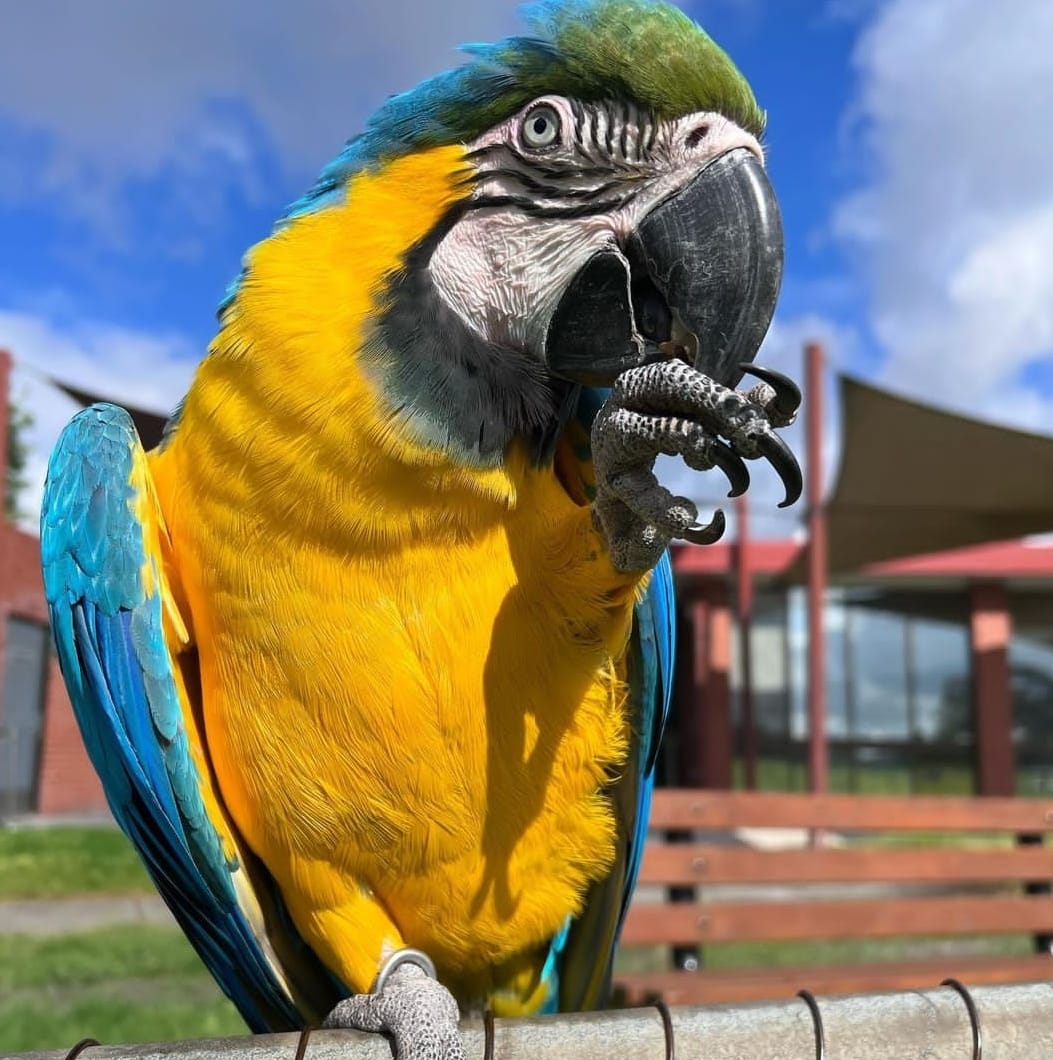What's The Job Market For Why Are The Glaceous Macaw And Hyancith Maca…
페이지 정보

본문
 why are the glaceous macaw and hyancith macaw so alike (Cameradb link for more info) Are the Hyacinth Macaw and Glaucous Macaw So Similar?
why are the glaceous macaw and hyancith macaw so alike (Cameradb link for more info) Are the Hyacinth Macaw and Glaucous Macaw So Similar?Despite their distinct characteristics, these two bird species share a common evolutionary story. Their shared dependence on palm swamps for nesting and roosting demonstrates the interconnectedness of nature as well as the need to conserve habitats that are endangered.
With its vibrant blue plumage and distinctive yellow accents the hyacinth macaw is distinctive. Its beak, which appears be smiling, is capable of tearing coconuts and brazil nuts.
The Hyacinth Macaw
The Hyacinth Macaw is by far the largest parrot and is a stunning bird. It is striking blue hue with yellow accents around the eyes and in the lower portion of the beak. This can make it look like it is smiling. It has a short, sturdy legs that allow it to hang upside down or sideways. It also has a hook on its beak with a hook that is adapted to break open coconuts. They are very smart and social, with a tendency to remain with one partner throughout their lives.
Hyacinth Macaws don't migrate and their range is contingent on the availability of palm species, which are their primary food source. This is the primary distinction between macaws and other parrots which are generally migration-oriented.
The hyacinth Macaw eats a large amount of nuts from native palm trees. Particularly, the acuri and the bocaiuva. They are able to crack the seeds into pieces thanks to their powerful beaks, and they also eat fruits and other plant material.
They are not migratory and their population is tightly dependent on the availability of the acuri and bocaiuva palms that provide the majority of their primary food source. This is a major distinction between macaws and the majority of parakeets that tend to be migrants.
The hyacinth Macaw is a parrot that is found in areas with less dense forest, such as palm swamps or grasslands that flood. The vast majority (90 90 percent) of the hyacinth macaw keycaps population is found in the Pantanal region, which is the largest tropical wetland in Brazil.
Hyacinth Macaws, as with other birds are monogamous. They pick a partner approximately 3-4 years old and stay with them their entire lives. They are very social and often interact and communicate with humans. However it is essential to keep in mind that they are wild animals and should not be removed from their natural surroundings.
If you want to spend time with an intelligent, beautiful and spirited animal that can mimic your words, consider adopting your pet parrot from an aviculturist who breeds these magnificent animals. Finding a responsible aviculturist who is well-established is the best way to ensure that these incredible creatures will be taken care of in captivity.
The Glaucous Macaw
The Glaucous Macaw, or Ara Glaucus, is among the most vibrant birds that live in the Amazon basin. The large parrot is found in the tropical forests of South America. It has a blue top and yellow underparts. The bird is extremely scarce and classified as Critically endangered. The cause of the decline of this bird is most likely the trapping of live adults for the wild bird trade and the mass felling of palms yatay (Butia yatay) which appear to be its primary food source.
The bird's name is derived from its strikingly blueish hue, which is described as pale turquoise to azure in color. Its underparts are yellowish and it has a gray head. It is smaller than Lear's macaw and more slender than hyacinth Macaw.
The glaucous harlequin macaw is not just a beautiful bird, but also a symbol of hope to those living in the Amazon Basin. It is hoping that the glaucous Macaw will soon be found in the wild and that populations can be rebuilt to ensure the survival of this magnificent species.
Although the glaucous chestnut fronted macaw has been believed to be extinct in the wild, there are a few known reappearances over the years. One of the most exciting was in February 1992, when a female specimen was spotted at Customs in Britain. It was a bird that had been housed at some of the most famous zoos in the world and, at the time, it was believed that this was an authentic macaw with glaucous.
The glaucous Macaw, which was believed to be authentic, was found to be a hybrid of the Lear's Hyacinth as well as macaws. Its azure coloring was more reminiscent of the hyacinth's and was bred to breed hybrids.
Even if the glaucous macaw does turn up in the wild again however, it is not likely that it will be able to breed and produce healthy offspring. This bird has been threatened for too long. It is tragic if this gorgeous tropical giant was to disappear for ever.
The Origins of the Macaw
Macaws typically form bonds with their human companions and can be quite affectionate. They are vocal birds, and can be heard with a wide range of calls and songs. They enjoy mimicking sounds and voices especially those of their human counterparts. Macaws who live with humans can learn to imitate words. The loud, shrieking calls that macaws make are their natural way of communicating with other members of their family or to signal danger. They'll call for between 5 and 10 minutes many times throughout the day.
If a pair of macaws decide to create a bond, they will remain together until one dies. They will adorn feathers of each other and roost together in the evening. They also mate at least every year, laying their eggs in a nest built in a hollow of a tree or dirt hole on a cliff face. The female incubates the egg for 12 weeks, while the male collects food and shields the chicks from predators.
As humans began to interact with macaws, they began to train them, and then use them as companion birds. They were regarded as symbols of love and power, with their powerful beaks and vibrant blue feathers. Some people believed macaws could tell them the future or answer their prayer. They were also used to scare off crocodiles and snakes by making their shrieking sounds.
For many years nobody knew the precise number of macaws with glaucous sex that ever existed. The data showed that a few specimens were kept in captivity, but no one knew their location or age. One of the most famous birds lived in Paris"Jardin d'Acclimatation" between 1886 until 1905. Another was in a zoo near Buenos Aires during the 1920s to 1936. Despite these early reports, it was widely believed that the glaucous Macaw was extinct.
In 2010, an analysis of isotopics revealed that the glaucous macaw remains in the wild. The findings of the study were published by Science. The authors suggest that the glaucous macaws in the wild probably originated from a group located in the Paquime region in northern Chihuahua. The fact that the birds seem to live for a long time is due to the fact that they can adapt to their surroundings. They can survive in arid desert conditions, for example.
The Future of the great green macaw
Parrots are able to adapt to their environment in a remarkable way. In the wild, they are able to move miles away from their home to find new mates and nesting places. They also can mimic human speech. Their feet are shaped to allow them to climb in trees. They can carry food in their beaks.
However, despite these natural talents parrots aren't domesticated in the way cats and dogs have been. They are wild animals and need to remain in the same way that their ancestors did. Due to their wild nature, if you decide to bring a parrot into your home, ensure you are doing it with careful thought and consideration. Parrots can be noisy and large, and they may cause damage to your furniture and your home. The CITES list also includes the loss of habitat and over-collection of parrots for the pet industry.
One of the most impressive examples of a successful reintroduction effort is the storied story of the Spix's Macaw that was thought to be extinct until Helmut Sick and his field assistant, Dante Teixera, spotted a party of three of them close to Formosa do Rio Preto in 1974. At the time of the discovery, the only pair of birds kept in captivity was in Al Wabra, Qatar.
At a conference in the city of Sao Paulo, Purchase and other conservationists agreed that the only solution was to release captive macaws back into the wild. They needed to do it fast, however, since the number of breeding pairs was extremely small. Additionally, they had to establish separate lineages at the various breeding centers so that a single pair of parents did not overwhelm the entire population with its genes.
The conservationists began to search Brazil for any Spix's macaws that were in private ownership that could be made available to be reintroduced. The owners were initially reluctant to come forward because they risked being prosecuted for why are The glaceous macaw and Hyancith macaw So alike violating a law banning the export of wildlife. Kiessling claims that "one by one" people began to come forward.

- 이전글See What Windows Eastleigh Town Tricks The Celebs Are Making Use Of 25.02.13
- 다음글A Peek Inside The Secrets Of Double Glazing Repair In Eastleigh 25.02.13
댓글목록
등록된 댓글이 없습니다.

